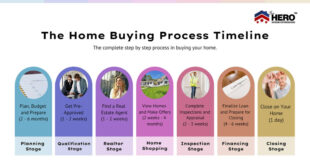Lowest Refinance Rates: Secure the Best Deal for Your Home. Refinancing your mortgage can save you thousands of dollars if you secure the lowest refinance rates. Whether you’re looking to reduce your monthly payment, shorten your loan term, or cash out on your home equity, understanding how to find the best rates is crucial. This guide provides comprehensive insights into achieving that goal.
What Are Refinance Rates?
Refinance rates are the interest rates lenders offer when you take out a new loan to replace your existing mortgage. These rates fluctuate based on factors like the economy, credit scores, and market demand. The lower your refinance rate, the less you pay in interest over the life of the loan.
Factors Affecting Refinance Rates
- Credit Score: Higher credit scores often lead to lower interest rates.
- Loan-to-Value Ratio (LTV): Lenders prefer lower LTV ratios for better rates.
- Market Conditions: Economic factors like inflation and Federal Reserve policies influence rates.
- Loan Term: Shorter terms typically come with lower rates.
- Type of Refinance: Cash-out refinances may have higher rates compared to rate-and-term refinances.
How to Qualify for the Lowest Refinance Rates
- Check Your Credit Score: Ensure your credit report is accurate and free of errors.
- Improve Your Debt-to-Income Ratio (DTI): Pay down existing debt to improve your financial standing.
- Shop Around: Compare offers from multiple lenders to identify the most competitive rate.
- Consider Discount Points: Paying points upfront can reduce your interest rate.
- Timing Your Application: Apply when rates are historically low or during lender promotions.
Step-by-Step Guide to Refinancing Your Mortgage
- Evaluate Your Financial Goals: Determine why you want to refinance—lower payments, reduced term, or cash-out.
- Check Market Trends: Research current refinance rates and trends.
- Gather Documentation: Prepare financial records, including tax returns, pay stubs, and bank statements.
- Get Preapproved: Submit your application to multiple lenders to understand available options.
- Compare Loan Offers: Review interest rates, fees, and terms from different lenders.
- Lock in Your Rate: Secure your rate during the application process to avoid future increases.
- Close the Loan: Complete the closing process by signing the final paperwork and paying closing costs.
Advantages of Securing the Lowest Refinance Rates
- Reduced Monthly Payments: Lower rates mean less money spent on interest each month.
- Lower Lifetime Interest Costs: You’ll save tens of thousands over the loan’s term.
- Faster Loan Repayment: Save by switching to a shorter-term loan with reduced interest.
- Increased Home Equity: With lower payments, you can pay down the principal balance faster.
Potential Drawbacks to Consider
- Closing Costs: Refinance fees can be significant, ranging from 2%-6% of the loan amount.
- Resetting the Loan Term: Extending your term may increase total interest paid over time.
- Rate Fluctuations: Waiting for lower rates may backfire if market rates increase unexpectedly.
10 Tips for Securing the Lowest Refinance Rates
- Monitor Credit Reports Regularly: Fix errors to boost your score.
- Avoid Large Purchases Before Applying: New debt can harm your credit score.
- Choose a Shorter Loan Term: Opt for 15 or 20 years instead of 30 years.
- Refinance During Low-Rate Periods: Apply when market rates drop.
- Negotiate Fees: Request lower closing costs or waived fees.
- Bundle Other Products: Some lenders offer discounts for combining services.
- Research Government Programs: Look for FHA, VA, or USDA refinancing options.
- Be Consistent with Your Income: Stable employment history reassures lenders.
- Consider Adjustable-Rate Mortgages (ARMs): Short-term ARMs can offer initial lower rates.
- Consult a Mortgage Broker: Brokers can compare lenders to find you the best deal.
10 FAQs About Refinance Rates
- What is a good refinance rate in today’s market?
Rates vary, but anything below the national average is considered competitive. - How does my credit score affect refinance rates?
Higher scores usually qualify you for lower rates. Aim for 740 or higher. - Are refinance rates lower than purchase rates?
Often, but not always. It depends on lender policies and market conditions. - Is it worth refinancing for a 1% rate reduction?
Yes, if the savings outweigh the closing costs over time. - What are closing costs for refinancing?
These typically range between 2%-6% of the loan amount. - How long does the refinancing process take?
The average process takes 30-45 days from application to closing. - Can I refinance with bad credit?
Yes, but you may face higher rates or require a co-signer. - What is a no-closing-cost refinance?
It shifts fees into your loan balance or increases your interest rate. - How many times can I refinance my mortgage?
There’s no limit, but costs and eligibility requirements must be considered. - What is a rate lock?
A rate lock guarantees your interest rate for a set period, typically 30-60 days.
Conclusion
Refinancing your mortgage with the lowest refinance rates is a smart financial move if done strategically. By understanding the factors that influence rates, preparing your finances, and comparing offers from multiple lenders, you can secure a deal that aligns with your long-term goals.
Whether you’re aiming to reduce monthly payments, build equity faster, or leverage cash from your home’s value, the key lies in diligent research and timing. Take advantage of today’s market opportunities to improve your financial outlook and achieve lasting savings.
 mortgage.kbk.news
mortgage.kbk.news
